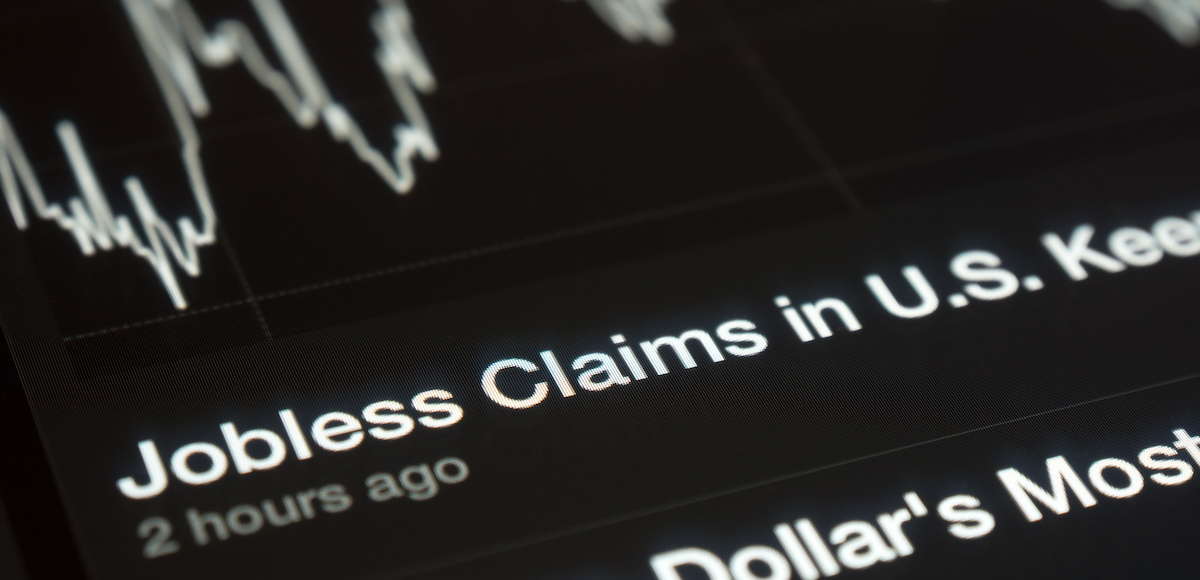

U.S. jobless claims graph on a tablet screen.
Initial jobless claims fell 18,000 to a seasonally adjusted 214,000 for the week ending July 7, the U.S. Labor Department (DOL) reported. The previous week was revised up by 1,000 from 231,000 to 232,000.
The 4-week moving average came in at 223,000, a decline of 1,750 from the previous week, which was revised up by 250 from 224,500 to 224,750.
The advance seasonally adjusted insured unemployment rate remained unchanged at a very low 1.2% for the week ending June 30. The advance number for seasonally adjusted insured unemployment during the week ending June 30 was 1,739,000, a decrease of 3,000 from the previous week’s revised level.
The previous week’s level was revised up 3,000 from 1,739,000 to 1,742,000.
The 4-week moving average rose 9,500 from the prior week’s revised level to 1,728,500, off the lowest level since 1973. The previous week’s average was revised up by 750 from 1,718,250 to 1,719,000
No state was triggered “on” the Extended Benefits program during the week ending June 23.
The highest insured unemployment rates in the week ending June 23 were in the Virgin Islands (2.4), Alaska (2.1), Connecticut (2.0), New Jersey (2.0), Pennsylvania (2.0), Puerto Rico (2.0), California (1.9), Illinois (1.6), Rhode Island (1.6), and the District of Columbia (1.4).
The largest increases in initial claims for the week ending June 30 were in Massachusetts (+4,795), New Jersey (+4,364), Kentucky (+4,024), New York (+2,771), and Connecticut (+2,642), while the largest decreases were in California (- 6,404), Pennsylvania (-3,966), Maryland (-2,500), Wisconsin (-1,322), and Oregon (-490).
The most damning journalistic sin committed by the media during the era of Russia collusion…
The first ecological study finds mask mandates were not effective at slowing the spread of…
On "What Are the Odds?" Monday, Robert Barnes and Rich Baris note how big tech…
On "What Are the Odds?" Monday, Robert Barnes and Rich Baris discuss why America First…
Personal income fell $1,516.6 billion (7.1%) in February, roughly the consensus forecast, while consumer spending…
Research finds those previously infected by or vaccinated against SARS-CoV-2 are not at risk of…
This website uses cookies.